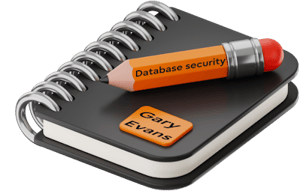Think of these benchmarks as your roadmaps to securing your databases. They are not just a checklist; they're a starting point for building a robust security posture that aligns with your organization's cybersecurity framework.

So, let's break down why these benchmarks are key and how to adapt them to suit your unique environment.
Understanding security benchmarks for databases
 Security benchmarks are sets of standards or best practices developed by cybersecurity experts. They provide guidelines on configurations, security policies, and practices to secure databases effectively.
Security benchmarks are sets of standards or best practices developed by cybersecurity experts. They provide guidelines on configurations, security policies, and practices to secure databases effectively.
Why they're important: They serve as a great starting point, especially if you're new to database security or looking to reassess your current security posture. Benchmarks like those from the Centre for Internet Security (CIS) or the Defense Information Systems Agency (DISA) offer well-researched and widely accepted standards that can be extremely helpful.
The flexibility of security benchmarks
One size doesn't fit all in database security, and that's where the beauty of these benchmarks really shines. They are not rigid rules but flexible guidelines.
Adapting to your needs: Every organization has its unique infrastructure, data types, and security needs. You can tailor these benchmarks to fit your specific requirements. For instance, if your organization handles a lot of sensitive customer data, you might want to ramp up certain aspects of the benchmarks that focus on data encryption and access controls.
Integrating benchmarks with your organization’s cybersecurity framework
 Your organization might already have a cybersecurity framework in place, like NIST or ISO/IEC 27001. The good news is that security benchmarks for databases can seamlessly fit into these frameworks.
Your organization might already have a cybersecurity framework in place, like NIST or ISO/IEC 27001. The good news is that security benchmarks for databases can seamlessly fit into these frameworks.
Why integration matters: By aligning the benchmarks with the existing framework, you ensure that your database security efforts are in sync with the broader organizational security strategy. It's like making sure all the pieces of the puzzle fit perfectly to give you a complete picture of security.
A personal touch: my experience with CIS benchmarks
As a consultant, I regularly refer to the CIS Benchmark for PostgreSQL, especially when working with Fujitsu Enterprise Postgres. This benchmark is a treasure trove of insights, offering detailed guidance on securing databases against various attack vectors. What's fantastic about it is how it not only tells you what to do but also how to test your defenses to ensure they're up to the mark. This hands-on approach has been instrumental in ensuring that my development and test databases at Fujitsu meet a rigorous level of security.
Practical steps to implement security benchmarks

- Assess and identify
Start by assessing your current database security posture. Identify areas where you're already compliant and areas that need improvement.
- Customize
Modify the benchmarks to suit your specific database environment and organizational needs. Prioritize based on the sensitivity of the data you handle and the specific risks your organization faces.
- Implement and train
Implement the customized benchmarks. Also, train your team on these new standards to ensure everyone's on the same page.
- Regularly review and update
The cybersecurity landscape is always changing, and so should your benchmarks. Regularly review and update them to stay ahead of emerging threats.
Conclusion
Security benchmarks are not just guidelines; they are the stepping stones to building a fortified database security strategy. By understanding, customizing, and integrating these benchmarks into your organization's cybersecurity framework, you can create a robust defense for your most valuable digital assets.
What about you?
Before wrapping up, I would like to know about your experience and your opinion. For that purpose, I created the poll below, in case if you feel inclined to share your thoughts - it's quick and easy.
Next on this series
 In my next article, I'll delve into the nitty-gritty of some specific benchmarks and how to apply them in real-world scenarios, diving into one example from the CIS Benchmark for PostgreSQL 16. See you there.
In my next article, I'll delve into the nitty-gritty of some specific benchmarks and how to apply them in real-world scenarios, diving into one example from the CIS Benchmark for PostgreSQL 16. See you there.
Stay tuned and don't forget to subscribe to be notified of new posts. Let's make our databases not just storage units, but fortresses!


 Hey database dynamos!
Hey database dynamos! 


